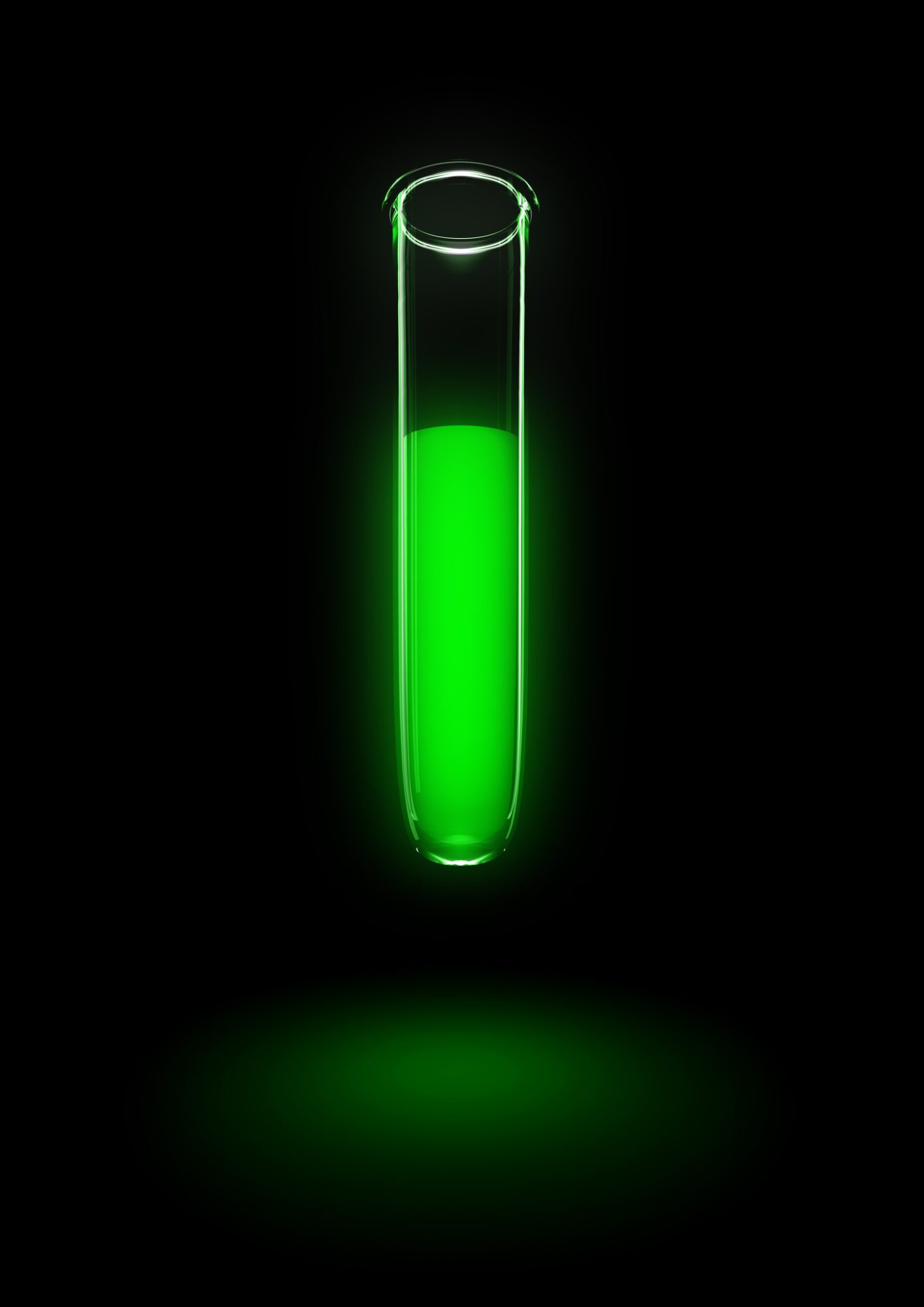Nicola Edwards, Associate Professor of Chemistry at the University of St. Joseph, is conducting research on the development of fluorescent sensors for anion detection
Fluorescent (chemo)sensors are molecules that register changes in their “glow” (fluorescence ) when bound to an analyte (the substance of interest that is being studied), thus reporting the presence of that analyte. These changes can be detected with the naked eye. and/or instrumentation. Therefore, the presence of this invisible substance can now be detected. Fluorescent sensors are generally more sensitive and have lower limits of detection for a particular analyte compared to colorimetric sensors. Anions—chemical entities with an overall negative charge—are found everywhere and are involved in numerous chemical, biological, and industrial processes. As an example, cavity-fighting kinds of toothpaste and gels contain anion and fluoride. Additionally, chemical compounds containing anions, nitrate and phosphate are used in fertilizers. In this piece, Dr. Nicola Edwards discusses her ongoing work on developing fluorescent sensors for anions.
1. Challenges in anions detection
Q. Why are anions (as a group) challenging targets for sensors?
Sensors are composed of two parts: (1) receptors which are responsible for binding analytes and; (2) signalling units which report the analyte-binding event.
The challenges associated with designing anionic sensors can be reduced to the receptors. These receptors must been carefully designed to ensure that they bind anions competently. One challenge is the high affinity of anions for the solvents, such as water, that they are dissolved in. The receptor must be competent enough to outcompete solvent molecules to ensure that they bind anions.
Another challenge is the variety of shapes of anions. Some classes of receptors are designed so that the anion-binding moieties (groups of atoms) are complementary to the shapes of the anions. This necessitates that the receptors too have a variety of designs, i.e., a “one size fits all” approach cannot be used. If two anions present with the shape, then the design must address the selectivity of the receptor for one of the anions vs. the other anion.
2. The specifics on anion detection
Q. Can you describe how the sensors developed by your group work?
The mechanism of anion sensing involves using lanthanides—a group of metals in the middle of the periodic table. The fluorescence of lanthanides can be “switched on” in the presence of a molecule that can act as an appropriate sensitizer or antenna. Terbium is the lanthanide that is used in our studies due to its green fluorescence under UV light, which is visible to the naked eye. Terbium is well-known for its use in green phosphors in television and computer screens.
Our sensors are designed so that anions bind to either Terbium or the sensitizer; both cause changes in the fluorescence output (amount of glow) of the sensors.

3. Innovations in fluorescent sensors
Q. Can you elaborate on the innovative aspects of the fluorescent sensors developed by your group and how they contribute to the field of anions detection?
We synthesize sensors in a single step from the requisite starting materials. The reaction that is used is amenable to scale-up, and the system can be diversified—a library of sensors can be synthesized. The quantum yields (fluorescence outputs) of the sensors are good as are their fluorescence lifetimes . These sensors boast large binding constants towards a variety of anions, including chloride, dihydrogen phosphate, pyrophosphate, acetate and hydrogen sulfate. This means that they bind these anions very well.
4. Applications of fluorescent sensors
Q. How do you see these fluorescent sensors being used practically in areas such as biology, physiology, and environmental sciences?
These sensors are applicable in numerous arenas. I will provide a few examples. Determining the concentration of the anions, nitrate and phosphate, is important for the “health” assessment of waterways in environmental settings. Nitrate and phosphate are found in fertilizers and make their way into water runoffs, leading to eutrophication. Imbalances in the concentrations of anions in biological fluids serve as indicators of diseases and other conditions. For example, a high concentration of the anion nitrite, in urine, serves as an indicator of a urinary tract infection. Additionally, a high concentration of the anion lactate, in serum, is an indicator of liver disease.
5. Future directions in sensor design and development
Q. Considering the ongoing investigations and looking ahead, what will be the focus of your research on sensor design and development?
We are currently diversifying our system to create a group of sensors that can be used in a sensor array. Each sensor in this array is not selective for any one particular anion, but displays moderate selectivity towards a range of anions. These sensors work in tandem to create “fingerprints” for anions. Sensor arrays are powerful tools for discriminating analytes and mixtures thereof in a variety of media. We are also focused on making changes to our system so that it can detect anions in water.
6. Extensions to courses and research collaborations
Q. Have there been any significant collaborations in developing these sensors, and how have these collaborations impacted the outcomes of the research?
Array sensing can be easily implemented in teaching and service projects. In my own courses, this project has formed the basis of a CURE (Course-Based Undergraduate Research Experience) component in which teams of students have synthesized, characterized, and tested sensors’ capabilities. The development of sensor arrays gives students opportunities to work both independently and collaboratively with their peers.
In collaboration with Mr. Koby Osei-Mensah from the Loomis Chaffee School, students from his organic chemistry class conduct research at the University of St. Joseph. They develop some of the sensors that are needed for the sensor array. This partnership has allowed us to introduce talented high school students to research, which is vital to their career development. These two ventures are viewed as ways of making research accessible to a broader population of students. We hope that this will increase the pipeline of scientists as well as the rigor and interest in our courses.
References
- [Molecules | Free Full-Text | Terpyridine-Functionalized Calixarenes: Synthesis, Characterization and Anion Sensing Applications (mdpi.com)]
https://www.mdpi.com/1420-3049/26/1/87 - [Fluorescent and colorimetric sensors for anions: Highlights from 2020 to 2022 – ScienceDirect] https://www.sciencedirect.com/science/article/pii/S0010854523005507#bi005
- [A Review of Course-Based Undergraduate Research Experiences in Chemistry – ACS Publications] https://pubs.acs.org/doi/full/10.1021/acs.jchemed.3c00570?ref=recommended

This work is licensed under Creative Commons Attribution-NonCommercial-NoDerivatives 4.0 International.


